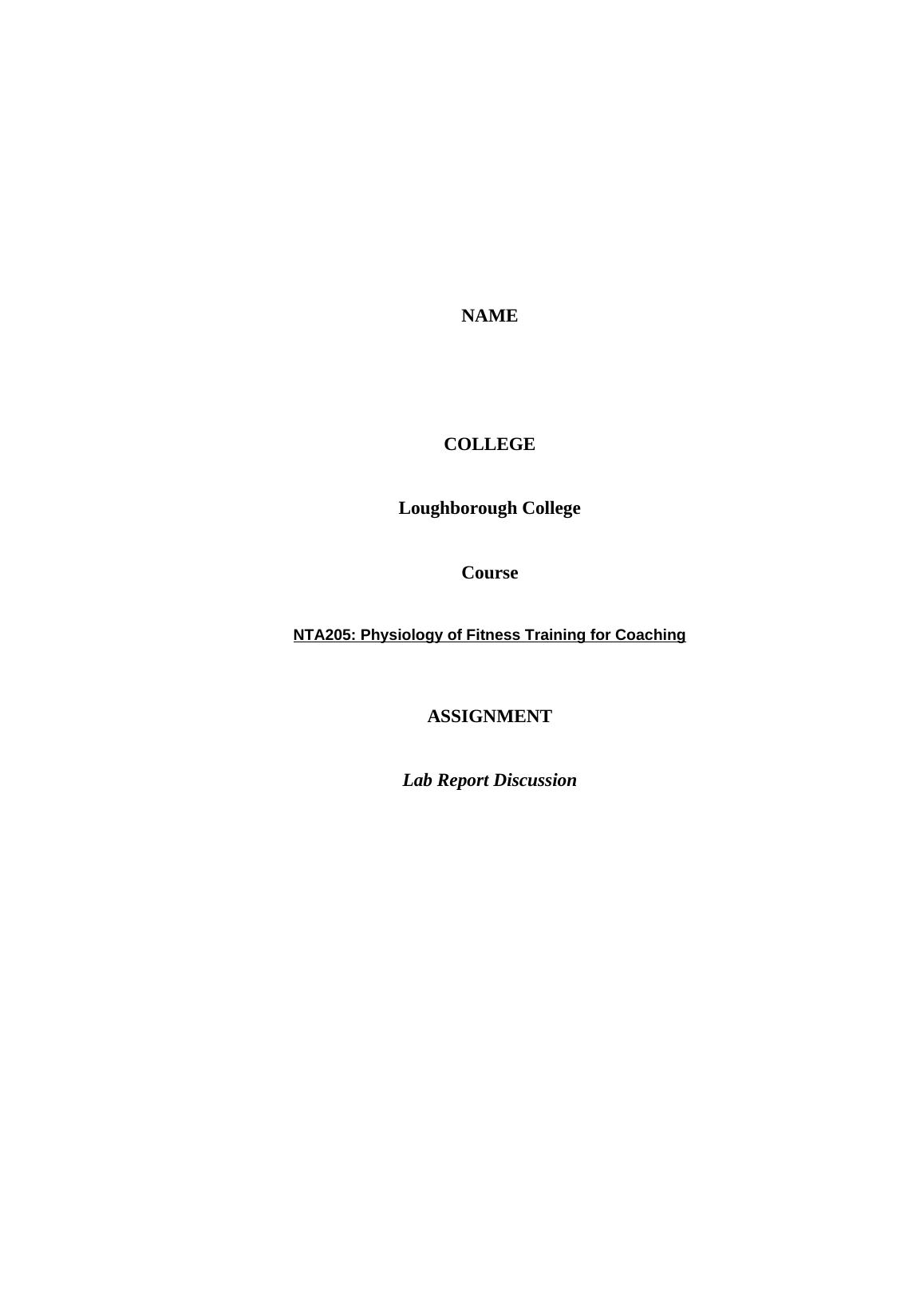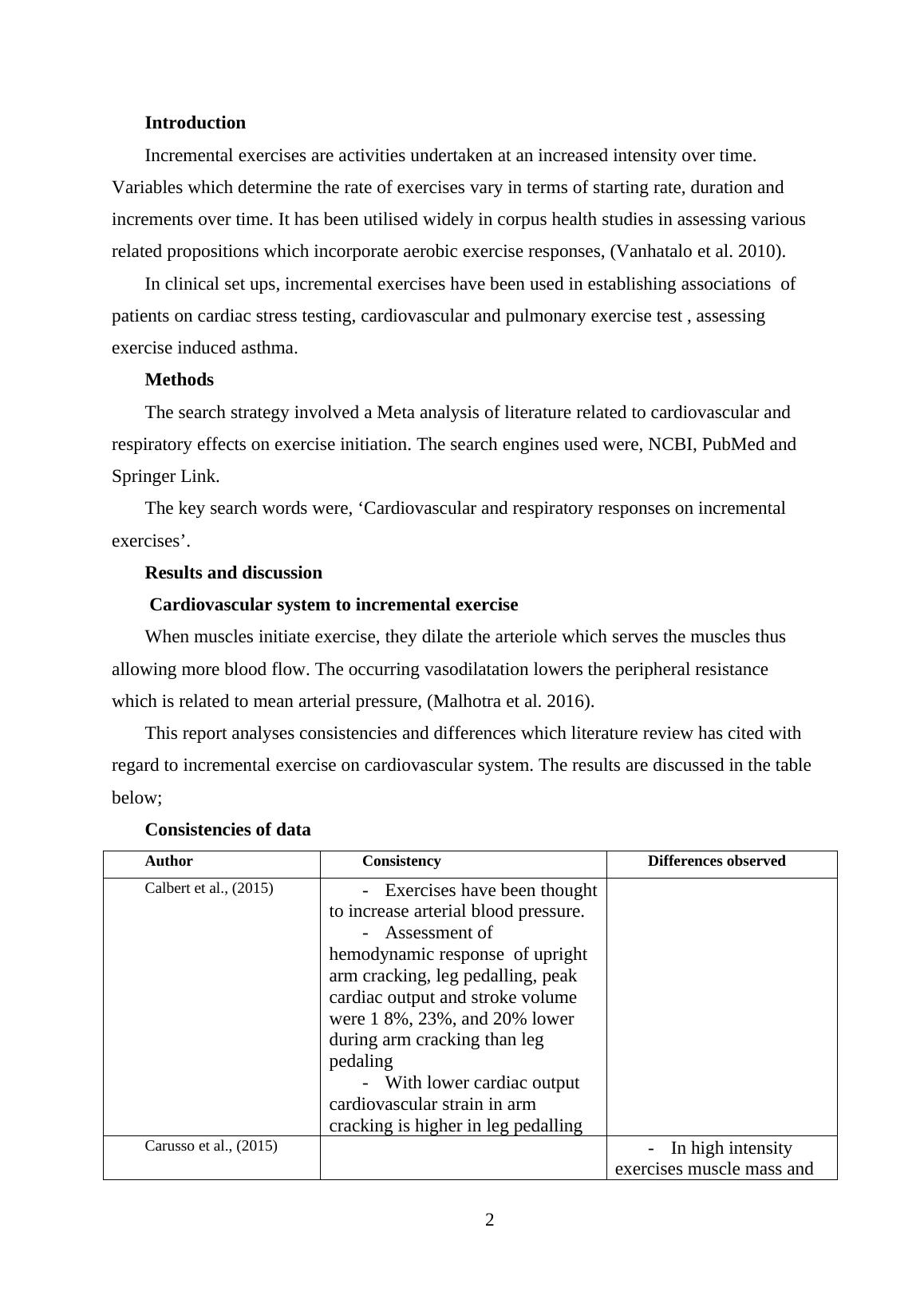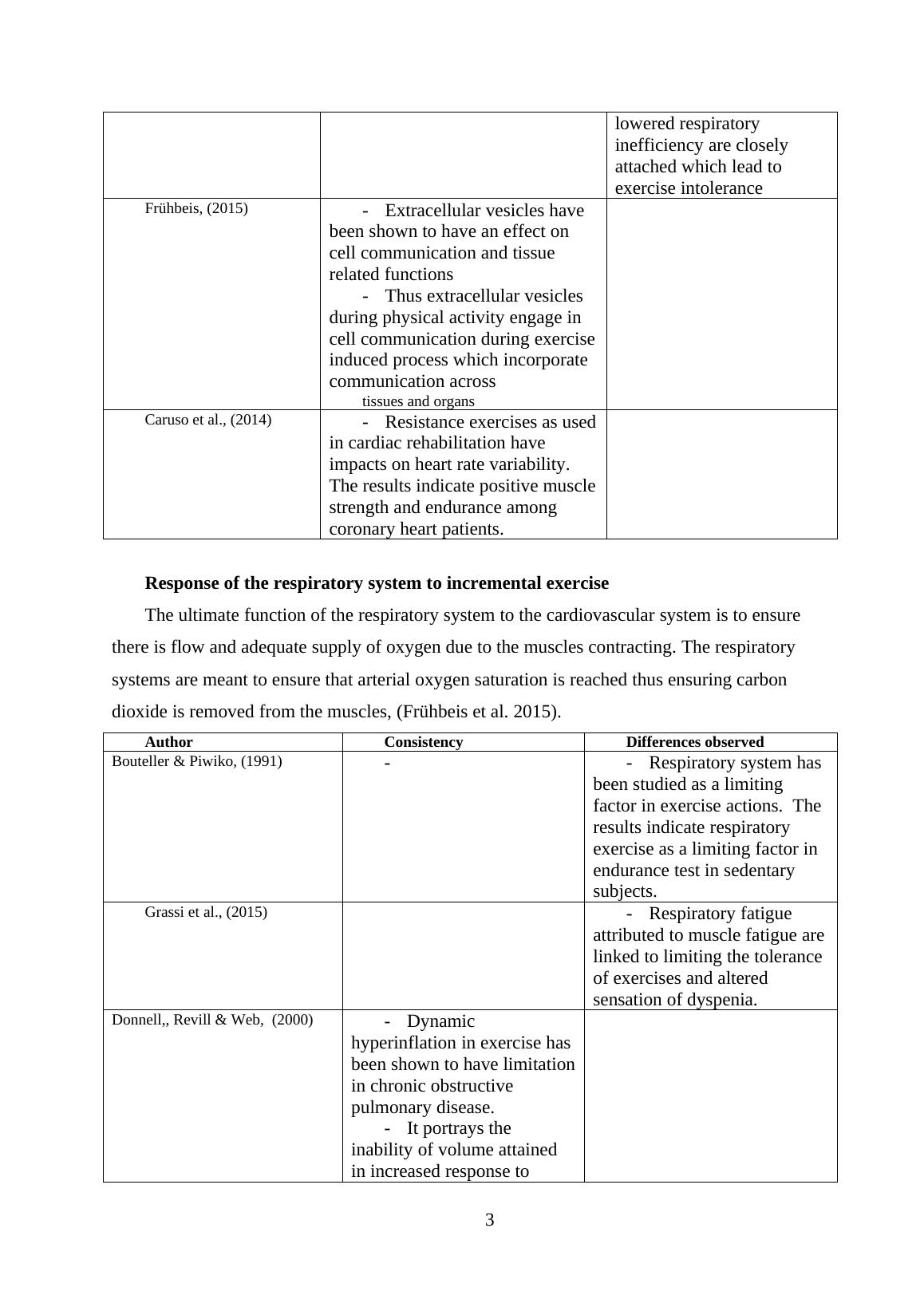NTA205 Cardiovascular and Respiratory
Added on 2021-04-17
6 Pages1208 Words25 Views
NAMECOLLEGE Loughborough College Course NTA205: Physiology of Fitness Training for CoachingASSIGNMENT Lab Report Discussion

Introduction Incremental exercises are activities undertaken at an increased intensity over time. Variables which determine the rate of exercises vary in terms of starting rate, duration and increments over time. It has been utilised widely in corpus health studies in assessing various related propositions which incorporate aerobic exercise responses, (Vanhatalo et al. 2010). In clinical set ups, incremental exercises have been used in establishing associations of patients on cardiac stress testing, cardiovascular and pulmonary exercise test , assessing exercise induced asthma.MethodsThe search strategy involved a Meta analysis of literature related to cardiovascular and respiratory effects on exercise initiation. The search engines used were, NCBI, PubMed and Springer Link.The key search words were, ‘Cardiovascular and respiratory responses on incremental exercises’.Results and discussion Cardiovascular system to incremental exerciseWhen muscles initiate exercise, they dilate the arteriole which serves the muscles thus allowing more blood flow. The occurring vasodilatation lowers the peripheral resistance which is related to mean arterial pressure, (Malhotra et al. 2016). This report analyses consistencies and differences which literature review has cited with regard to incremental exercise on cardiovascular system. The results are discussed in the tablebelow; Consistencies of dataAuthor Consistency Differences observedCalbert et al., (2015)-Exercises have been thoughtto increase arterial blood pressure.-Assessment of hemodynamic response of upright arm cracking, leg pedalling, peak cardiac output and stroke volume were 1 8%, 23%, and 20% lower during arm cracking than leg pedaling-With lower cardiac output cardiovascular strain in arm cracking is higher in leg pedallingCarusso et al., (2015)-In high intensity exercises muscle mass and 2

lowered respiratory inefficiency are closely attached which lead to exercise intoleranceFrühbeis, (2015)-Extracellular vesicles have been shown to have an effect on cell communication and tissue related functions-Thus extracellular vesicles during physical activity engage in cell communication during exerciseinduced process which incorporate communication across tissues and organsCaruso et al., (2014)-Resistance exercises as usedin cardiac rehabilitation have impacts on heart rate variability. The results indicate positive musclestrength and endurance among coronary heart patients.Response of the respiratory system to incremental exerciseThe ultimate function of the respiratory system to the cardiovascular system is to ensure there is flow and adequate supply of oxygen due to the muscles contracting. The respiratory systems are meant to ensure that arterial oxygen saturation is reached thus ensuring carbon dioxide is removed from the muscles, (Frühbeis et al. 2015).Author Consistency Differences observedBouteller & Piwiko, (1991)--Respiratory system has been studied as a limiting factor in exercise actions. The results indicate respiratory exercise as a limiting factor in endurance test in sedentary subjects.Grassi et al., (2015)-Respiratory fatigue attributed to muscle fatigue are linked to limiting the tolerance of exercises and altered sensation of dyspenia.Donnell,, Revill & Web, (2000)-Dynamic hyperinflation in exercise has been shown to have limitationin chronic obstructive pulmonary disease. -It portrays the inability of volume attained in increased response to 3

End of preview
Want to access all the pages? Upload your documents or become a member.
Related Documents
Case Study on Cardiovascularlg...
|10
|2204
|31
Clinical Assessment of COPD- Case Studylg...
|14
|3898
|154
Summative Essay.lg...
|17
|5119
|16
Health Issues and Rehabilitation Strategieslg...
|14
|2724
|221
Cardiopulmonary Exercise Testing at Incremental and Steady State Exerciselg...
|21
|2877
|15
FITNESS ASSESSMENT AND ANTHROPOMETRY INTRODUCTIONlg...
|10
|1660
|197
